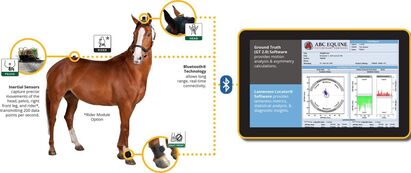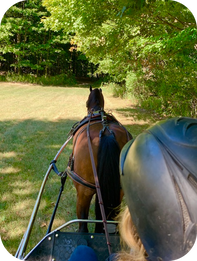Equine Lameness Examinations
Are The Focus Of Our Practice
Dr. Morgan uses a step wise process to evaluate soundness based on objective data.
There are two parts to an equine lameness examination. A dynamic gait examination and a static physical examination. She has been using the Lameness Locator by Equinosis as an integral part of the dynamic examination since 2008.
There are two parts to an equine lameness examination. A dynamic gait examination and a static physical examination. She has been using the Lameness Locator by Equinosis as an integral part of the dynamic examination since 2008.

